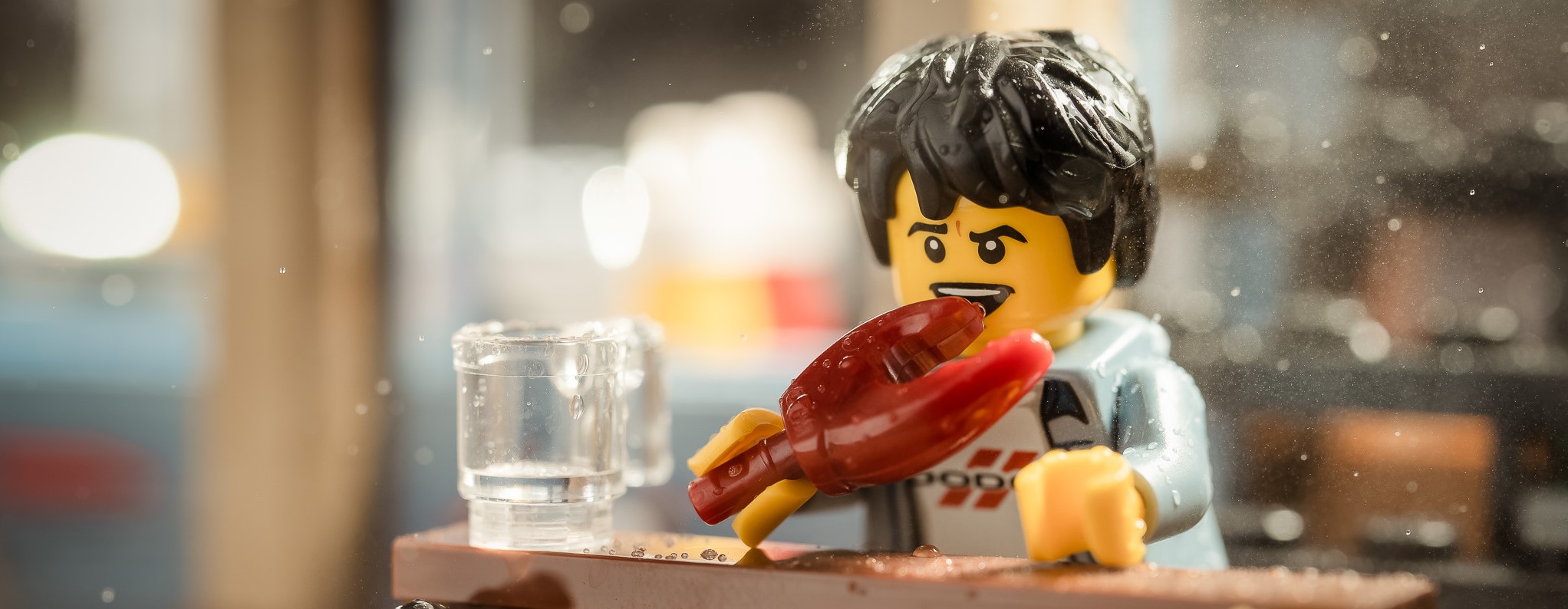This
post was originally published on
this sitehttp://www.marksdailyapple.com/
 Hey folks! Erin is here for another round of Ask a Health Coach. If you’re sleep-compromised, stressed out about carbs, or you’re a chronic snooze button pusher, today’s post is for you. Keep your questions coming in the Mark’s Daily Apple Facebook Group or share them down in the comments section.
Hey folks! Erin is here for another round of Ask a Health Coach. If you’re sleep-compromised, stressed out about carbs, or you’re a chronic snooze button pusher, today’s post is for you. Keep your questions coming in the Mark’s Daily Apple Facebook Group or share them down in the comments section.
Alicia asked:
“I’ve been trying to get up early to exercise, but I always end up hitting the snooze button and falling back asleep. Got any tricks to get myself up on time?”
I love that you’re setting goals for yourself. It proves that you don’t have to wait until New Year’s or (another) Monday to make a change in your life. But I get it. Any routine that’s different from your normal one can be a challenge to start, let alone stick with.
The good news is, this is kinda my specialty. I love teaching my clients to nurture their own personal accountability. When you’re responsible for your own actions — and the outcomes of those actions, it puts you in the driver’s seat. You’re in control when it comes to what you’re doing and not doing. It also sends a positive message to yourself that you’re worth it and that this change is important enough for you to make it a priority.
On the flip side, when you just toss a plan out there, cross your fingers, and hope for the best with a lukewarm attitude (and zero consequences), you’re pretty much setting yourself up to fail.
The first rule of accountability? Getting clear on your goals and the reasons why you want to achieve those goals. For your situation, I’d start by asking:
- What time am I waking up?
- What kind of exercise will I be doing?
- What type of equipment or gear will I need?
- Where will I be doing it?
- How long will I be exercising?
- Why does this matter to me?
- What will happen if I don’t break my snooze button habit?
Why is all of this important? Because there’s a big difference between people who set goals and those who actually succeed at them.
There’s a great piece of research that shows that having a concrete plan makes you three times more likely to achieve your goals. In the study, 248 participants who wanted to build better exercise habits were divided into three groups. One group was asked to track their workouts, one group received motivational information about exercising, and the third group was asked to formulate a plan for when and where they would work out.
More specifically, they were asked to complete the following sentence: During the next week, I will partake in at least 20 minutes of vigorous exercise on (day) at (time) in (place). For you, that might look like:
I will partake in at least 20 minutes of vigorous exercise on weekdays at 5:15am in my bedroom. Or dial it in even more by saying: I will partake in 20 minutes of weightlifting on weekdays at 5:15am in my bedroom.
Another way to increase your odds of getting yourself up on time? Make it easier to do — or harder to not do. James Clear, the quintessential expert on habits says, “the environment that you live in makes it easier to practice unhealthy habits and more difficult to practice healthy habits (…even if you really want to make a change).”
So, if you want to make it easier to work out in the morning, place your clothes, shoes, and weights in a place where you can visibly see them. If you want to avoid smashing the snooze button, consider putting it somewhere out of reach, like the bathroom or a room down the hall. You’d literally have to get out of bed to turn it off.
Practice these techniques and accountability tactics and see what happens. My guess is you’ll have a routine in place before most people are drafting up their New Year’s resolutions.
Tom asked:
“I find that I toss and turn most nights, or I wake up around 3:30 in the morning and have trouble going back to sleep. It’s definitely annoying, but it’s it normal?”
Common, yes. Normal, maybe. Ideal, absolutely not. A lot of my clients struggle to stay asleep, and it’s seemingly more of an issue than actually falling asleep. So, in short, you’re in good company. That said, it’s definitely something you’re going to want to address pronto. Here’s why.
In my opinion, a good night’s sleep is non-negotiable. Sleep is downright essential for performing basic physiological functions, from balancing your hormones and your mood to keeping your immune system strong, which is especially important right now.
Walking up in the middle of the night could be because of something you ate or drank during the day. Some studies have linked sleep quality to macronutrient intake – meaning you might need more or less carbs to achieve a solid 8 hours of shut eye. And if you’re a coffee drinker, even low levels of caffeine can have consequences. Try keeping a food log for 3-5 days and see if you notice any patterns between what you’re consuming and how you’re sleeping.
You’ll also want to take a look at your pre bedtime rituals.
1. Minimize screen time. If you need to use a computer, tablet, or phone in the evening, wear blue light blocking glasses or set devices to the “night shift” setting. Artificial light can mess with your circadian rhythm and therefore your sleep cycle.
2. Avoid that late-night drink. A glass of wine or cocktail might help you fall asleep faster, but it can disrupt your REM cycle, leaving you drained, groggy, and likely a little hungover the next day. Alcohol also relaxes the muscles, including the ones in your throat, which might cause you to snore more — or snore louder.
3. Keep your phone out of the bedroom. In addition to the aforementioned blue light situation, scrolling right before bed can lead to weird dreams and stressful fits of sleep. Plus, if you’re one of those people who checks email or social media the second you pop open your eyes, it might be worth exploring taking a break from that routine.
And if these don’t move the needle, consider getting in touch with a medical professional or health coach. Some Primal Health Coaches even specialize in sleep.
Marcelle asked:
“I’m stressing out about the carbohydrates I ate over Thanksgiving. I know a lot of people gain weight around the holidays, but I’ve been working so hard to keep it off. What can I do to off-set all those extra carbs?”
The holidays are always stressful, and, as I’m sure you’ve noticed, this year is no exception. But the extra pressure you’re putting on yourself for what you ate? Why do that to yourself? Adding stress on top of stress only makes your adrenals work harder, encourages your body to pump out more cortisol, and forces your body to store more fat, which if my hunch is correct, likely sends you into a spiral of worry, guilt, and shame.
So, in a nutshell, the way you’re thinking about your food intake actually has more of an impact than the food itself.
Also, since when are carbs a whole food group? I don’t know who needs to hear this, but carbohydrates are a macronutrient found in nearly every food, including, but not limited to almonds, apples, asparagus, broccoli, beans, cauliflower, carrots, mussels, oysters, yams, and yogurt.
Even if you served yourself up a plate loaded with meat and veg, you haven’t actually skipped the carbs. If you decided to skip the pumpkin pie with whipped cream and have fresh berries instead? Still carbs. If you passed on dessert altogether and poured another glass of wine? Still carbs.
We tend to criminalize these large subsections of foods — sweeping them all into one bucket. But not all carbohydrates are created equal and, honestly, not all of them are bad. When you become metabolically flexible, you can partake in any kind of food your heart desires and have the peace-of-mind that your body can handle it. You can burn fat for fuel. You can burn carbs for fuel. You can go back and forth between metabolizing them with relative ease. So, cut yourself some slack, and appreciate the fact that your body knows what to do.
Now it’s your turn! Drop me a few questions in the comments below.
The post Ask a Health Coach: Sleep, Stress, and the Snooze Button appeared first on Mark’s Daily Apple.





 Hey folks! Erin is here for another round of Ask a Health Coach. If you’re sleep-compromised, stressed out about carbs, or you’re a chronic snooze button pusher, today’s post is for you. Keep your questions coming in the Mark’s Daily Apple
Hey folks! Erin is here for another round of Ask a Health Coach. If you’re sleep-compromised, stressed out about carbs, or you’re a chronic snooze button pusher, today’s post is for you. Keep your questions coming in the Mark’s Daily Apple 
 One of my biggest inspirations was my late father, Laurence Sisson. He supported our family as a painter, primarily water color paintings of New England nature scenes. His work ethic was insane as was his creative genius. But my most salient memories of him are not those spent in the art studio watching beautiful representations of nature’s glory appear before my eyes. No, what I remember most are the evenings spent around the piano.
One of my biggest inspirations was my late father, Laurence Sisson. He supported our family as a painter, primarily water color paintings of New England nature scenes. His work ethic was insane as was his creative genius. But my most salient memories of him are not those spent in the art studio watching beautiful representations of nature’s glory appear before my eyes. No, what I remember most are the evenings spent around the piano.







 It’s easy to ignore your lack of rudimentary cooking skills when you order pizza or get takeout every night. When people switch to Primal or keto diets, they usually find themselves spending considerably more time in the kitchen. On the plus side, they’re better able to control ingredient quality and the macronutrient breakdown of their meals. For better or worse, this also forces them to confront their lack of culinary prowess.
It’s easy to ignore your lack of rudimentary cooking skills when you order pizza or get takeout every night. When people switch to Primal or keto diets, they usually find themselves spending considerably more time in the kitchen. On the plus side, they’re better able to control ingredient quality and the macronutrient breakdown of their meals. For better or worse, this also forces them to confront their lack of culinary prowess.


 For now classes are 6pm and 640pm at 2840 Wildwood st in the Boise Cloggers studio.
Book your class NOW!
click this ==>
For now classes are 6pm and 640pm at 2840 Wildwood st in the Boise Cloggers studio.
Book your class NOW!
click this ==>








